Atelier de Chronométrie Stuns Again With The New AdC17
A uniquely handcrafted split-second chronograph with a gorgeous 1940s design.
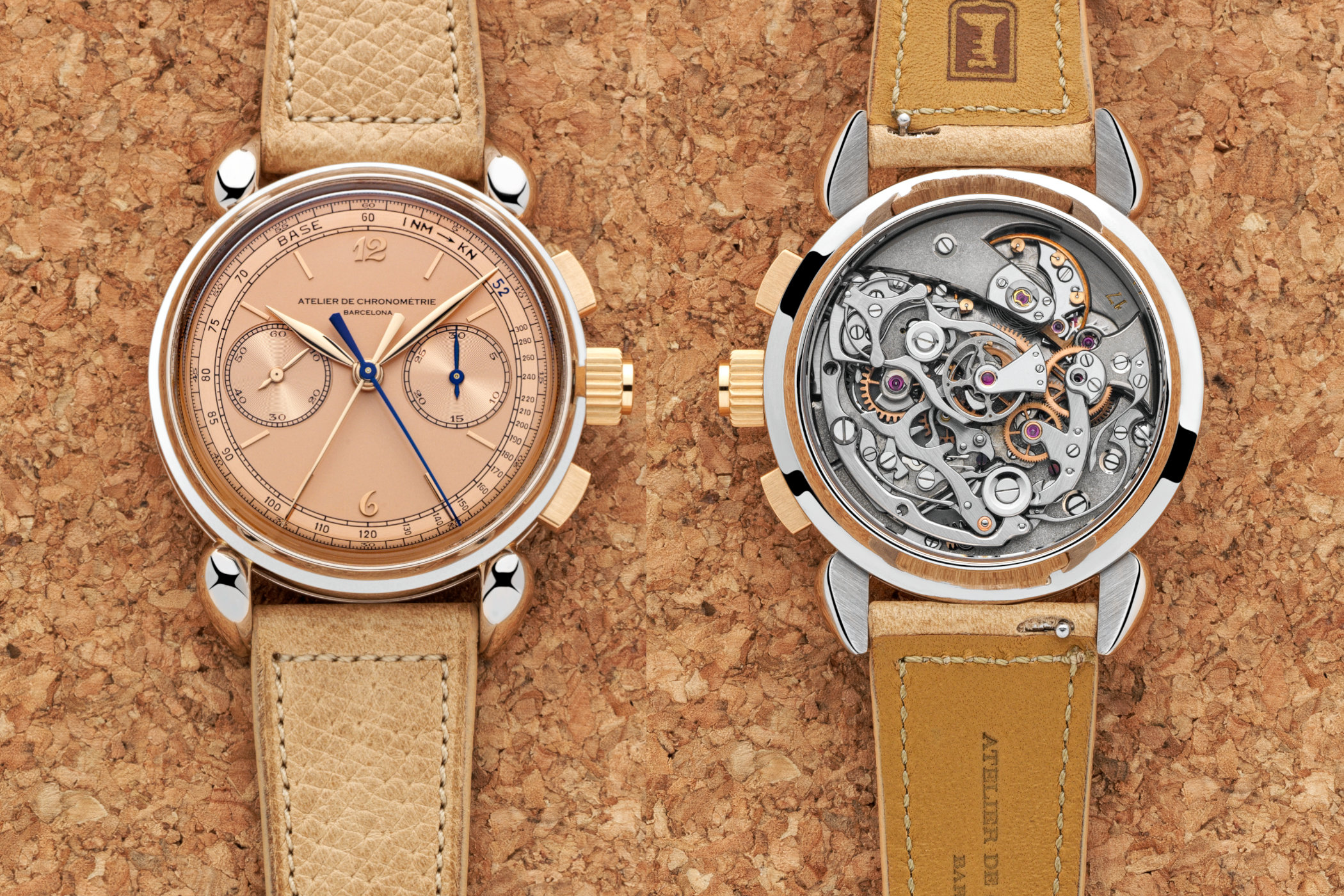
In a world that is increasingly computer-guided, laser-machined and mass-produced, it’s very nice to know the art of handmade things has not been lost. Whether it’s cars, tailored clothing, or watches, knowing that something has been crafted to perfection by the hands of an artisan gives tremendous satisfaction. As such, we fully embrace brands like Atelier de Chronométrie who uphold the tradition by creating fully bespoke, commissioned one-off pieces by hand and based on some of the best vintage movements. The latest (and possibly greatest) timepiece is the AdC17, a stellar manually wound split-second chronograph, with a little twist.
For anyone who has read our previous thoughts on Atelier de Chronométrie, it should come as no surprise the MONOCHROME editorial team got quite excited when news of the AdC17 landed. It is the type of watchmaking that drives our passion and motivates us to share such watches with you, our audience. Atelier de Chronométrie has been around for only a handful of years and is headed by vintage watch dealer and Patek Philippe expert Santiago Martinez. The brand caters to a very small but very discerning group of collectors and uses traditional design cues and mostly historic movements. At the start of the year, AdC introduced its first-ever proprietary movement, the calibre M284 found inside the AdC22(see below).
The watches that come out of AdC’s workshop in Barcelona are all unique pieces, each with its own story, never to be repeated. Everything is done in an ultra-traditional way using historic tools and techniques and finished to the highest standards. In the past, we’ve seen gorgeous time-only watches based on vintage Patek Philippe watches, a spectacular split-second chronograph (see above), and even a unique piece donated to Only Watch in 2021 (AdC is participating this year as well). Creating single pieces based on a client’s desires gives the brand tremendous flexibility, as basically every project starts from scratch and can go in all sorts of directions. The designs are mostly inspired by the 1940s and 1950s, the era that some consider the golden age of mechanical watchmaking.
Lucky number seven(teen)
The new AdC17 uses the AdC8 as a reference point. This finalist in the chronograph category of the 2020 edition of the GPHG was the first split-second chronograph by Atelier de Chronométrie, with the AdC17 being the second one to emerge from the atelier. It measures 39mm in diameter and 13.3mm in height, honouring the compact dimensions of watches from the era it’s inspired by. Once again it uses a grey gold case made up of three parts, including a polished concave bezel. The teardrop-shaped lugs are a thing of true beauty and give it that all-important 1940s look. On the right-hand side of the case you can see the rose gold pushers and crown, with an integrated pusher for the split-second function. On top, and on the bottom, a sapphire crystal is installed to protect the dial and movement.
Speaking of the dial, before we move to the engine that ticks inside the AdC17, this is once again a masterpiece of vintage design. The two-tone rose galvanic dial looks absolutely stunning, with its applied rose gold Breguet numerals and indices. The tachymeter scale offers a little twist compared to standard chronographs, as it comes in knots rather than kph/mph measurements. This nod to aviation was a distinct request of the client, as well as the blue 52 on the scale, of which the meaning is not communicated.
The central hour and minute hands are leaf-shaped and finished in polished rose gold. The remaining two central hands are for the chronograph, one finished in polished 18k rose gold and one finished in heat-blued steel The engine-turned subdials add a comforting balance to the dial, with the one on the left serving up the small seconds, and the one on the right dedicated to the chronograph minutes. All six hands are meticulously handcrafted of course. The final result is an absolutely amazing combination of materials, colours and design.
Venus 179
Like the AdC8, this one comes with a movement based on a vintage Venus calibre, which runs at a rate of 18,000vph and has an autonomy of 49 hours when fully wound by hand. The work starts by disassembling the entire movement, in this case, a Venus 179 ébauche. This split-second chronograph movement is then reconstructed and gets newly manufactured parts where needed or desired. Every update to the movement is made, finished and installed by hand in AdC’s own workshop in Barcelona, Spain.
Although the base architecture remains unchanged, multiple parts have been remade. This includes three bridges in Arcap, the anchor bridge, the rattrapante bridge, the free-sprung balance, several wheels and gears, etc. To highlight just two elements; the balance wheel is made of Beryllium copper and has 18k rose gold 6 masselottes (weights) to finely regulate it, and the central rattrapante wheel is made from titanium and has a distinct AdC design for its spokes. There’s obviously a lot more to be discovered, such as the gold chatons, the gold-plated wheels and so on.
All components are finished to perfection, honouring traditional Haute Horlogerie techniques. This includes black polishing on the screws and countersinks and several other components such as the stud holder plate for the balance wheel and the anchor bridge. Then there’s the anglage, paired with a technique called etirage des flancs, a type of brushing on the vertical side of the components. The three Arcap bridges have a grainage finish, and you can also discover hand-applied perlage and various types of brushing throughout the entire movement.
A true one-off
As mentioned, all watches by Atelier de Chronométrie are made by hand and are genuine one-offs. Bespoke watches, upon a client’s request, never to be remade exactly the same again. Of course, elements of previous watches can be found in previous creations but there’s always something that sets one watch apart from all the others. For instance, the case of the AdC17 is very similar to the AdC8 but adapted slightly to fit the client’s demands.
With this in mind, it’s not very logical to list a retail price for such watches as everything depends on specific requirements a client might have. Nevertheless, to give at least some indication, the base price for a split-second chronograph like the AdC17 starts at EUR 150,000. Certainly a heck of a lot of money, but do bear in mind you get a unique and handmade split-second chronograph watch in return, with some of the finest hand-applied Haute Horlogerie finishing around.
For more information on this incredible piece, or the brand, please visit AtelierdeChronométrie.com.


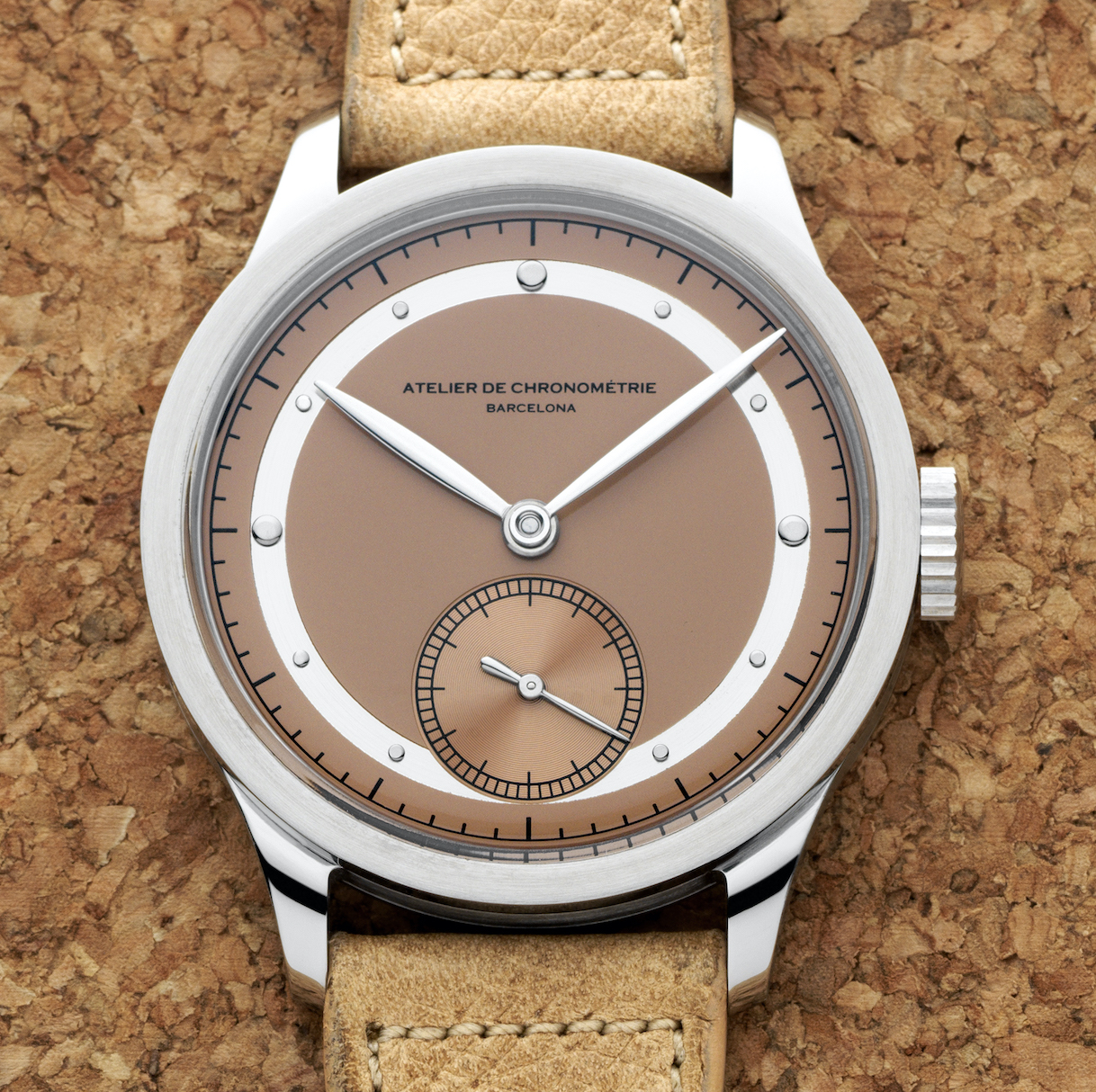
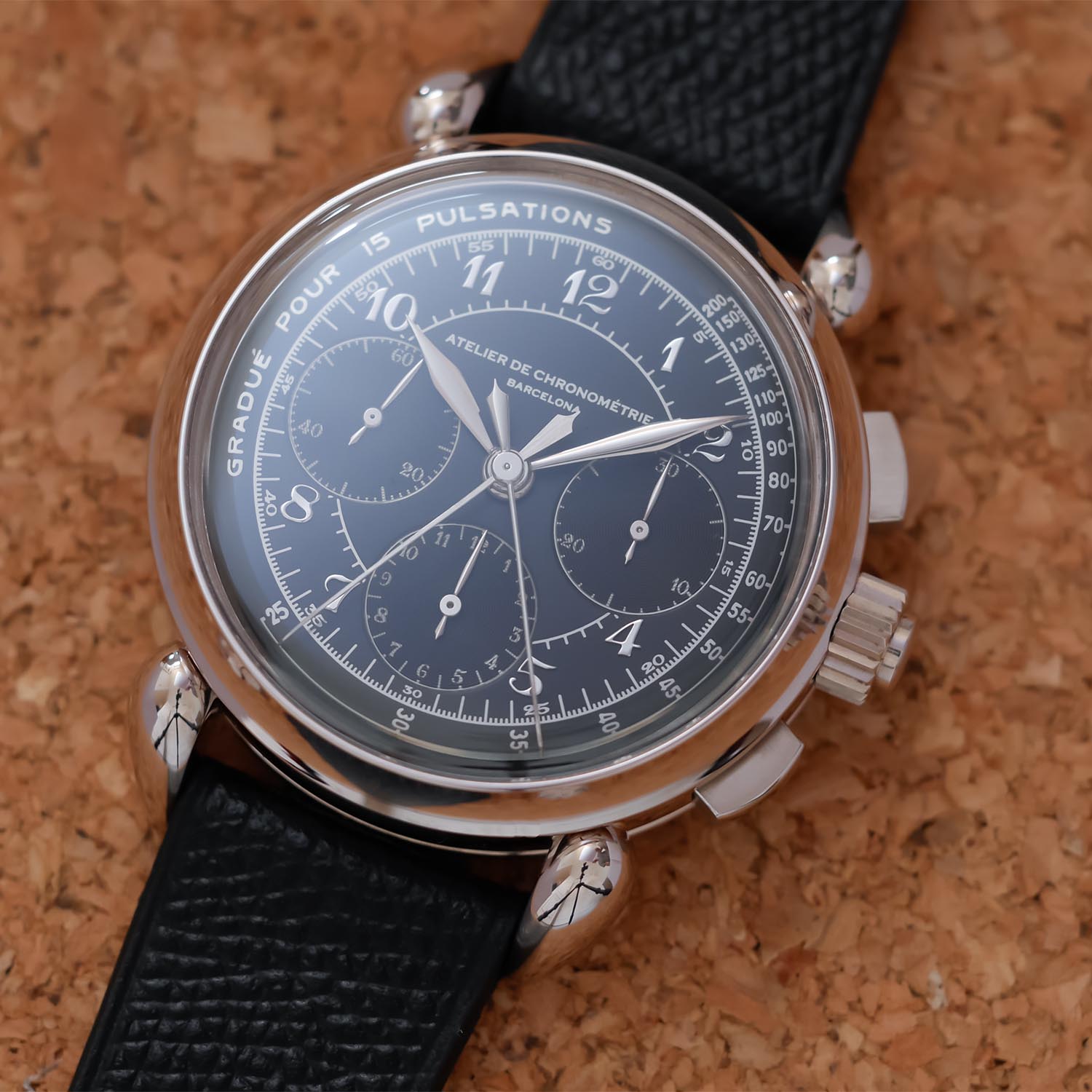
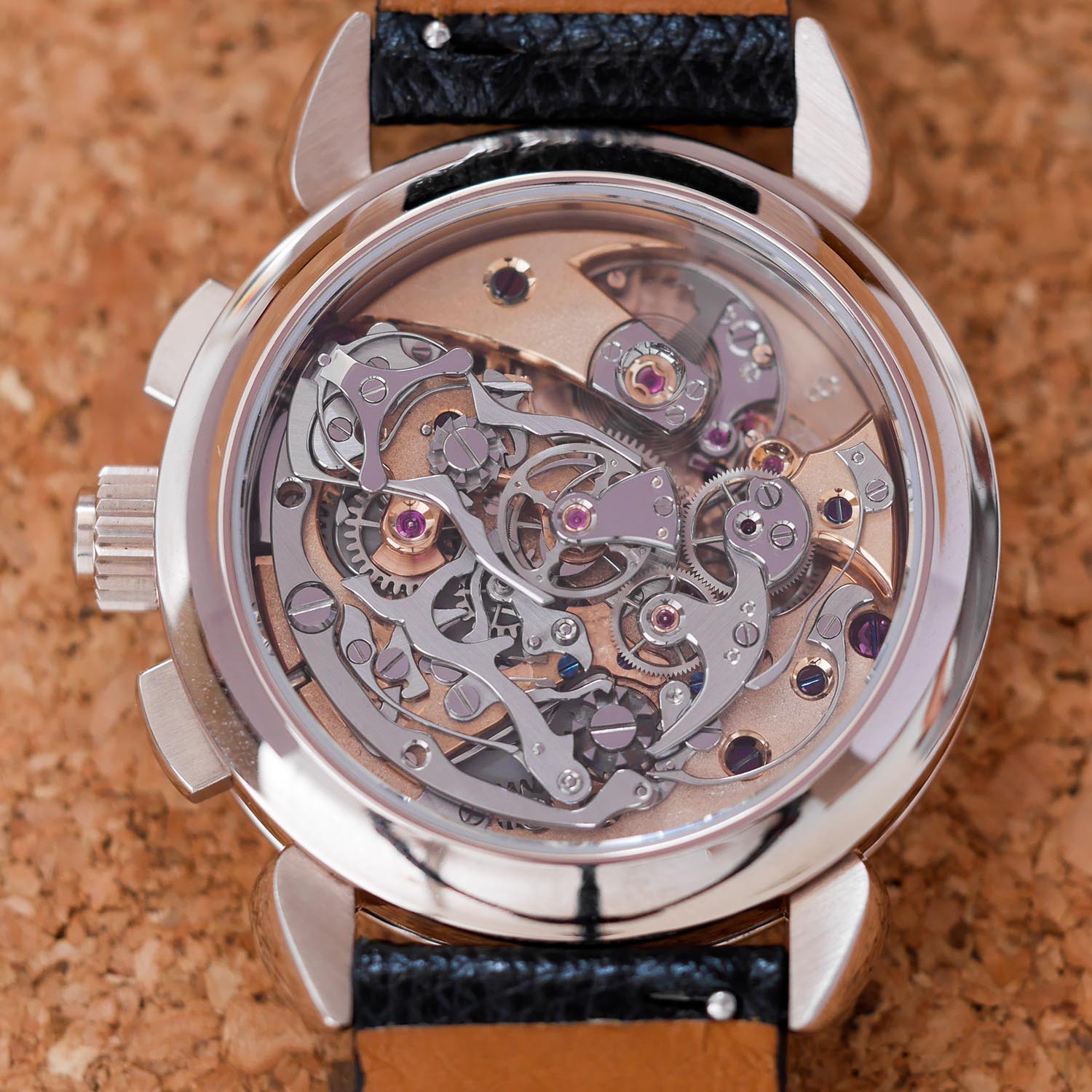


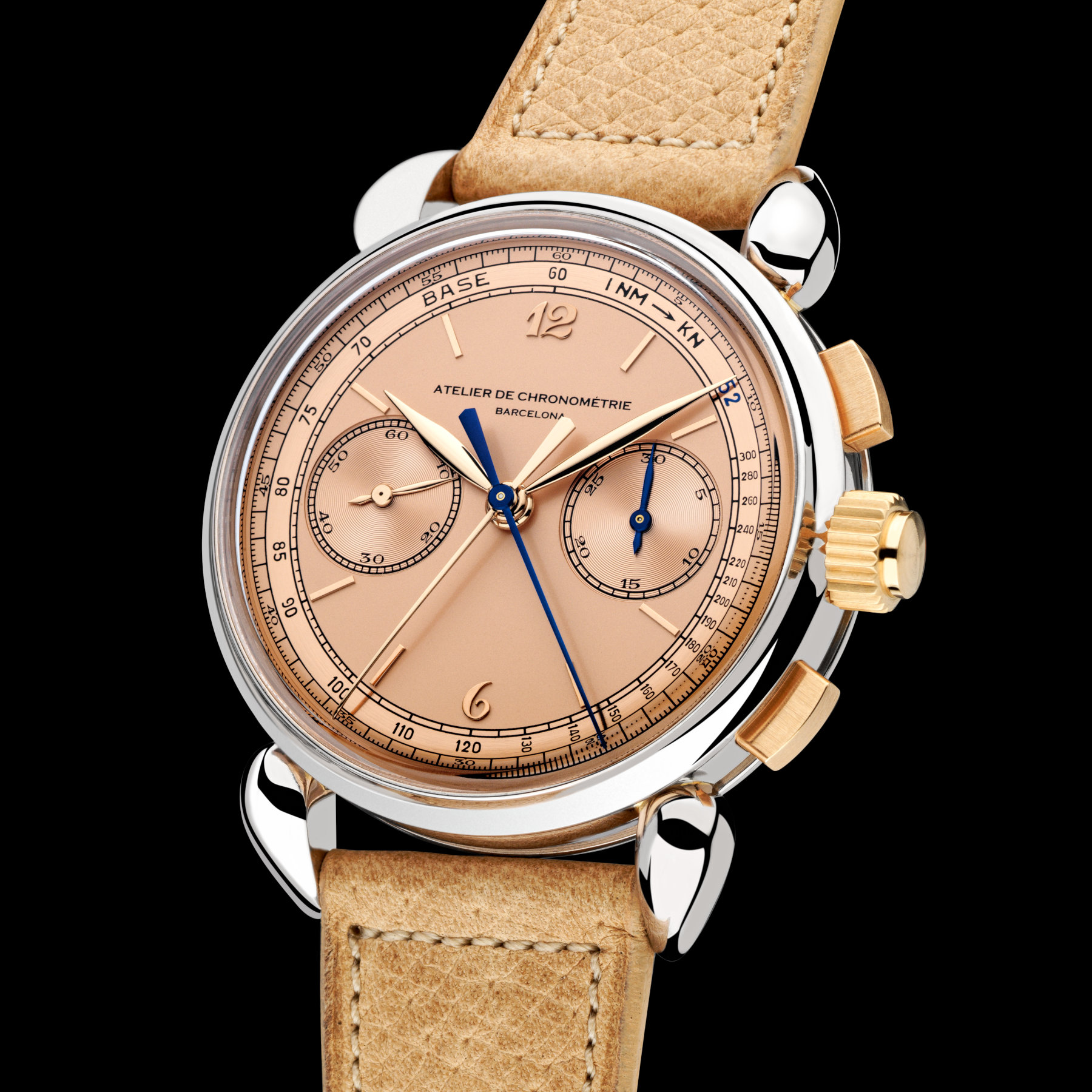
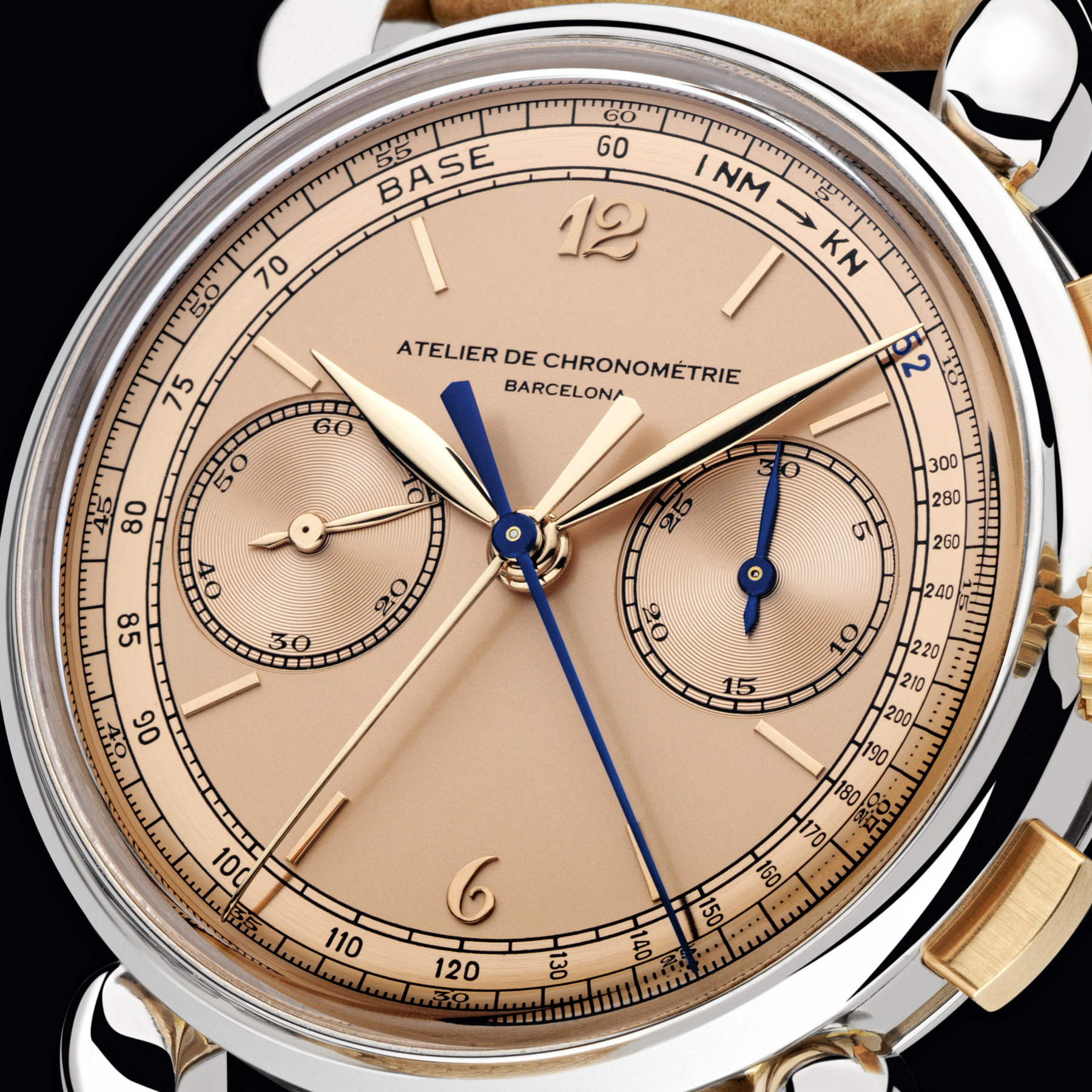








7 responses
For that money they could have a nicer strap.
For that kind of money, maybe have the strap be a unique piece too. Ha!
first glance: a re-edition of AP’s re-edition
Looks like VC’s corned de vache, only uglier when you look at the crown and pushers.
The case looks like Cuervo y Sobrinos ones.
Those lugs just kill it. Not that I was the target for this.
On the one hand the work is impressive, on the other hand the price is disappointing. In my hamble opinion it is double than what it should. This movement has been refined or even reworked in the 1990s by around 10 brands producing approx 400 split chronographs, priced at 1/3. Yes they are rare birds and very collectible, but 150,000 is over too much.